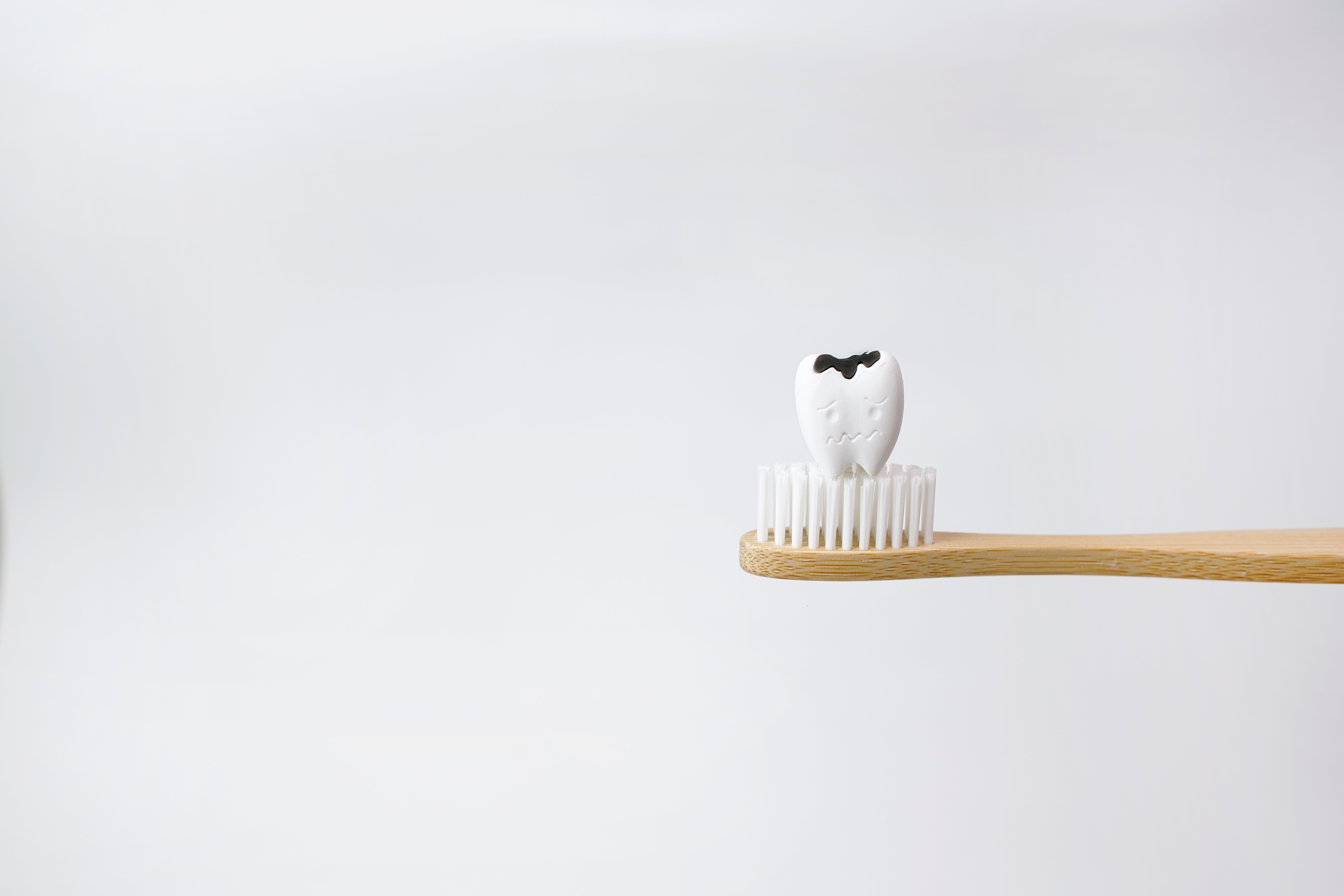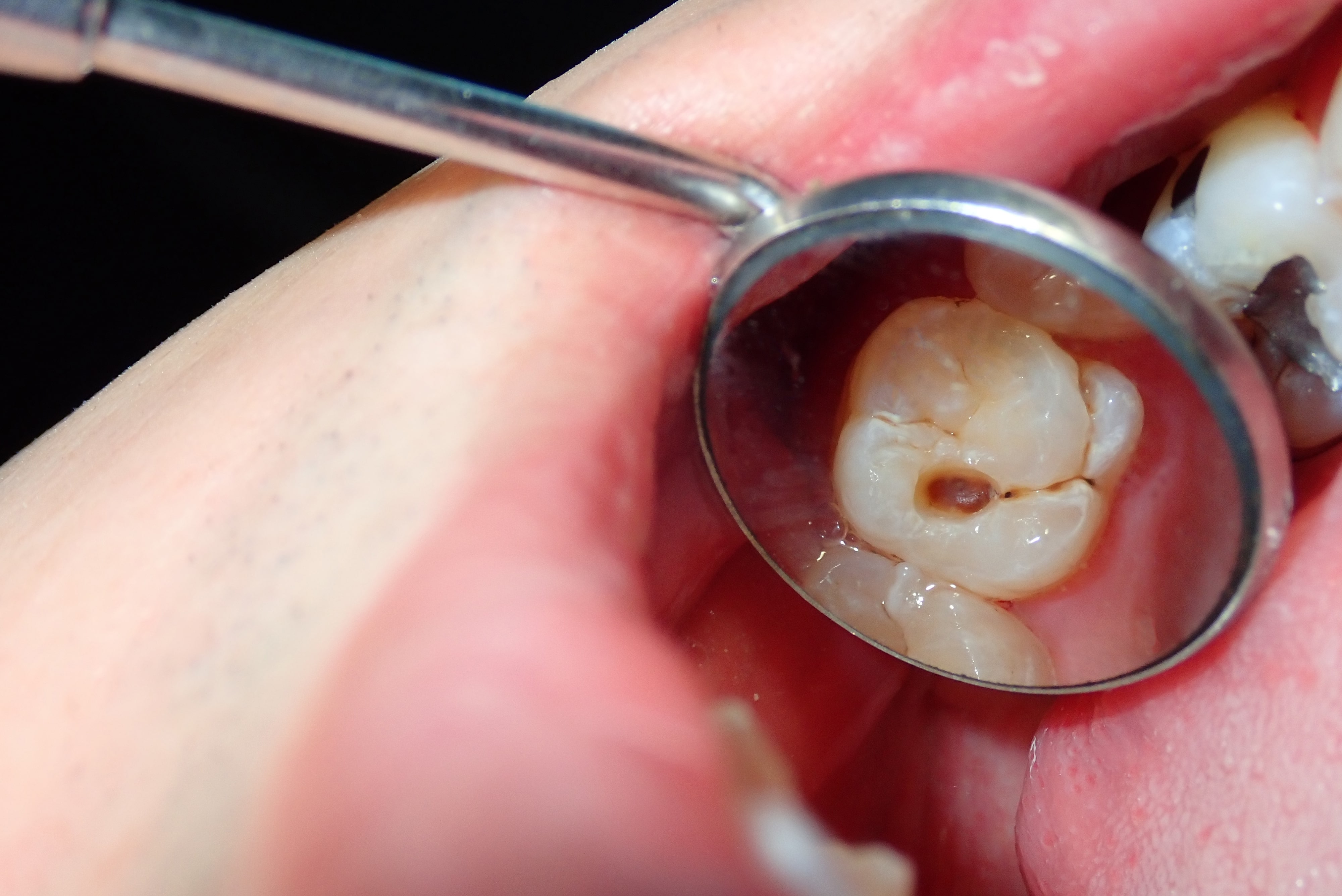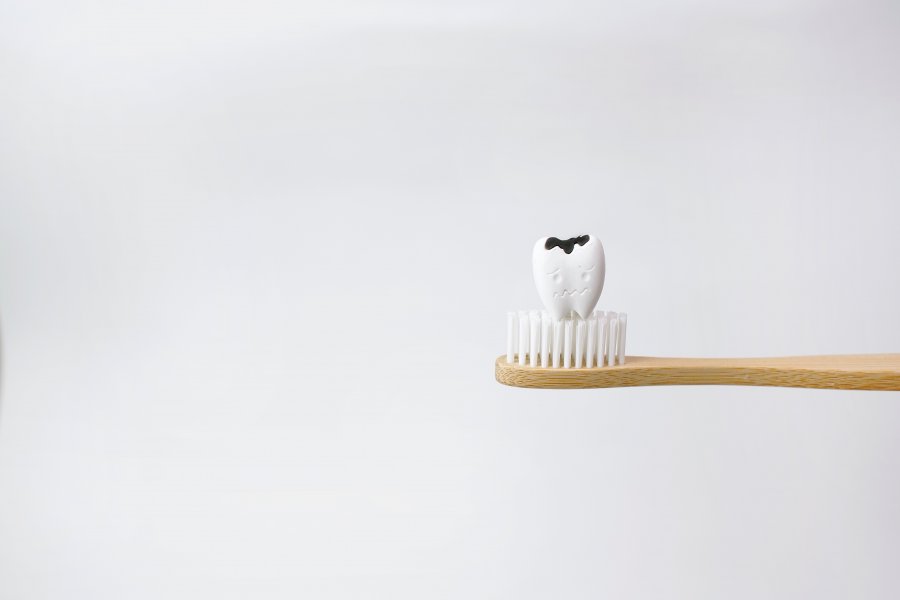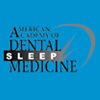What Does A Cavity Look Like?
If you’ve ever had a filling before, you might have been surprised to learn you had a cavity. You probably wondered, “What does a cavity look like anyway? How can the dentist tell I have a cavity?”
With many people behind on dental exams because of recent Covid restrictions, you may even question if you have a cavity now. Here’s all the information you need about cavities, including how to prevent them and when you should definitely see the dentist.
What Is a Cavity?
A cavity is simply a hole in your tooth. The cavity starts on the surface of the tooth and if untreated will continue to work its way inward towards the dentin (bony tissue beneath the outer enamel) and nerves connected to the tooth. That’s when a cavity can get really painful (see below). It can also become infected and cause an abscess, which is a pocket of pus around inflamed tissue.
You can have multiple cavities in one tooth. And you can get a cavity in any tooth in your mouth, including baby teeth. People of all ages can get cavities, from infants to senior citizens.

Cavities are a significant health problem and expense
Cavities are permanent damage to teeth and cannot be reversed. You might also hear cavities referred to as tooth decay or caries. Cavities are a major health problem around the globe, including in the United States. Consider these statistics from the US Centers for Disease Control (CDC):
- Approximately 1 out of every 6 children between the ages of 6 and 11 have had at least one cavity.
- More than a quarter of adults have untreated cavities.
- About 1 out of 6 people over the age of 65 have lost all their teeth.
- Smokers are 3 times more likely to lose their teeth.
- Over 34 million school hours are lost each year to dental emergencies.
- An estimated $45 billion in productivity is lost annually to oral disease.
- In 2018, $136 billion was spent in the US on dental care, including cavity diagnosis and treatment.
What Causes Cavities?
Technically speaking, cavities are caused by progressive tooth decay that happens in three stages.
Formation of plaque
If you eat a lot of sugars, including starches, and don’t clean your teeth well, plaque will form on your teeth due to normal mouth bacteria feeding on those sugars. Plaque is a clear film that feels slightly sticky. You may have felt it on your teeth after an extended period of not brushing.
Once plaque hardens into tartar (AKA calculus), it’s harder to remove, and it actually protects the bacteria that cause plaque, to begin with. Plaque can also move under the gum line and cause gum disease or periodontitis.
Attack of plaque
Plaque on the surface of the teeth eats away at minerals in enamel, the hard outer coating. Tiny holes open up in the enamel, which are the earliest forms of cavities. This makes it easier for bacteria and acids in plaque to keep moving towards the dentin. Dentin has microscopic tubes in it that connect to the underlying nerves. That’s why tooth sensitivity is often a calling card of this phase of cavity development.
Continue destruction of the tooth
Without intervention, erosion of the tooth continues to the innermost tooth material, the pulp. This is where all the nerves and blood vessels lie. Bacteria present can cause the pulp to become inflamed and swollen. Pressure from the swelling results in severe nerve pain. At this stage, pain may even extend to the bone above or below the tooth.
Cavity risk factors
There are many things that can put you or a family member at greater risk for cavities:
- Consuming certain foods and drinks - sugary foods like milk, soda, sweets, dry cereal, and dried fruit that cling to the teeth and aren’t easily swept away by your saliva
- Sipping soda or sugary beverages throughout the day
- Frequent snacking
- Bedtime baby bottles and toddler sippy cup drinking - leaves sugars on the teeth for many hours afterward
- Dry mouth and lack of saliva - can be caused by not drinking enough water and chemotherapy, as well as certain health conditions and medications
- Very young and very old age
- Inadequate or infrequent brushing
- Tooth location - molars and back teeth are most vulnerable because they’re the hardest to reach and have more pits on the surface that hold sugars and plaque
- Inadequate fluoride
- Worn or broken fillings in old cavities
- Acid reflux (AKA GERD or gastroesophageal reflux disease) - stomach acid flowing back into the mouth attacks the enamel
- Eating disorders - can cause tooth erosion from repeated vomiting or lack of saliva production
What Does a Cavity Look Like?
Cavities look a little different in each dental patient’s mouth. Sometimes we have to inspect the teeth very slowly and carefully or even use x-rays to find them. We also go by the patient’s symptoms (see below) as clues about where to look.
Often a cavity will look like a dark spot on the tooth, typically yellow, brown, or black in color. Early on, it may resemble tooth staining or a slight discoloration. As cavities progress, the holes get bigger and usually darker. A little dot can ultimately consume almost the entire tooth.
How Do You Know You Have a Cavity?
Seeing a cavity in your own mouth can be tricky. Even dental professionals often need to use a mirror when performing patient exams. But you may certainly feel a cavity. Often the complications of dental cavities overlap with symptoms. You should make an appointment with your dentist soon if you experience any of the following:
- Tooth sensitivity, especially to heat or cold
- Pain (may be extreme)
- Swelling of the mouth or jaw
- Swollen or bleeding gums
- Difficulty chewing (may cause weight loss and malnutrition)
- Pus around your teeth or gums (indicates an infection or abscess)
- Tooth chipping, cracking, or loss
- A hole or crater that you can see or feel on a tooth
- A soft or “boggy” spot on a tooth
- Dark spots on a tooth
- Persistent bad breath or an unpleasant taste in your mouth
How Are Cavities Treated?
Tooth removal
If a cavity has destroyed too much of a tooth, we sometimes have to remove it. Also, if a large cavity is present in a baby tooth that will fall out soon anyway, we often elect to pull the tooth. In general, though, we try to preserve what’s left of the tooth, since that’s less painful and less expensive, and it’s better for your bite and oral structure.
Filling
Therefore, most cavities are treated by filling them. Dentists have a wide range of options for filling materials available nowadays, so you can pick one that works aesthetically and financially, including being covered by dental insurance. These are the materials we have at our disposal.
- Cast gold: long-lasting and strong but very expensive, time-consuming to place, and don’t match the natural tooth color
- Silver (amalgam): durable and relatively inexpensive but look unnatural and require extra space in the tooth, plus may contain trace amounts of mercury
- Tooth-colored composite: the best choice to match teeth and can be used with chipped or broken teeth but wear out faster and cost more than silver fillings
- Ceramic: usually made of porcelain and resist staining but cost as much as gold
- Glass ionomer: made of acrylic and glass that can be used around nerves, below the gum line, and with very young children
Before applying the filling, the dentist numbs the area around the tooth to eliminate pain. Then, the decayed area of the tooth is removed with a fine dental instrument. The area is next cleaned, and sometimes a protective covering is applied to the nerve. Once the filling is in place, it may need to cure for a short time if it is a composite filling. As a final step, the filling is trimmed and polished.

Can You Prevent Cavities?
Suffering from cavities is not inevitable. But there are many things you and your children can do to prevent cavities from forming in the first place.
Tooth brushing
Frequent tooth brushing with good technique is your first line of defense against cavities. Ideally, you want to brush after every meal, but you should definitely brush at least twice per day with a fluoride toothpaste. Keep a toothbrush and toothpaste with you in your bag, backpack, or briefcase so you can brush as often as needed. Help young children with regular brushing until they’re able to do it on their own.
Flossing
Daily flossing should be on your to-do list, and it’s another dental care activity that little kids may need assistance with. Flossing properly removes bits of food from between the teeth to keep plaque from developing there. It is possible to get cavities on the sides of your teeth, so flossing is essential.
Rinsing
Rinsing your mouth with water or mouthwash can help remove the last bits of food after brushing. It’s also helpful if you have no brushing option at the moment. Your dentist may recommend a fluoride or antibiotic rinse if you have special dental needs.
Drinking plenty of water
Drinking water has tons of benefits, including advantages for your teeth. Staying hydrated helps promote more saliva production, which is a natural defense against plaque formation. When you substitute water for soft drinks or fruit juices, you further help your teeth. And if your tap water contains fluoride, as it does in many municipalities, it’s even better for your oral health.
Reducing consumption of sugary foods and drinks
As you learned above, foods and beverages with high sugar content put you at greater risk of cavities. Therefore, you want to seriously reduce your intake of these items. Replace these with water or fruits and vegetables. Even though fruits contain sugar in the form of fructose, many fruits naturally scrub the teeth when you eat them, so they’re not as bad as things like cake, cookies, ice cream, and candy.
Eliminate constant snacking and sipping
If you eat snacks and sip soda all day, you are exposing your teeth to plaque-inducing sugars for hours on end. This basically undoes your tooth brushing and makes you more vulnerable to cavities. Try to limit your snacking to once in the morning and once in the afternoon, brushing after if possible.
Avoid infant bedtime bottle feeding
Remember, feeding an infant milk or juice in a bottle at bedtime, especially if the child takes the bottle to bed, leaves too much sugar on the teeth overnight. Set a time limit for feeding well before bed, and start brushing their teeth early to establish a good habit. The same rules apply for toddlers drinking out of sippy cups.
Apply dental sealants
Sealants are most commonly applied to the teeth of school-age children. They are a thin coat of protection that adheres to the back teeth, the ones most likely to build plaque in their crannies and grooves. Sealants usually have a lifespan of several years.
Consider routine fluoride treatments
Dentists often recommend fluoride treatments when a patient doesn’t get enough tap water fluoride. People who only drink bottled water, for example, aren’t getting the same fluoride that the rest of their community do. Other people who get fluoride treatments are those who are at very high risk of tooth decay.
Chew gum containing xylitol
Chewing sugarless gum that contains xylitol helps encourage the production of saliva, which naturally removes excess sugars from the mouth. Additionally, enjoying a piece of sugarless gum after a meal when brushing is not available can help remove food particles from the teeth.
Treat acid reflux
There are several easy ways to treat acid reflux so stomach acid in the mouth doesn’t erode teeth. You should talk to your doctor if you think you have acid reflux (heartburn). Most likely, you will be given suggestions for over-the-counter medications to minimize acid production, as well as ideas for reducing acid-promoting foods in your diet.
See your dentist regularly
Visiting your dentist regularly for cleanings and exams is vital to prevent cavities. You can ask about special treatments, get a good deep cleaning of your teeth, and catch any tiny cavities before they grow and become much bigger problems.
Do You Think You Have a Cavity? Need a Checkup?
Do you suspect you might have a cavity? Ready for a checkup to have a look and make sure all is well with your teeth? If you’re in the Gainesville, GA area, call Brad Dixon, DMD at 770-535-1456, or use our easy dental appointments form online.














